In April of 1940, about a year after the debut of arguably their most popular character, Bruce Wayne/Batman, DC Comics debuted “the sensational find of [that year]”, Dick Grayson/Robin. Since then, Batman’s pixie-boots-wearing partner has changed outfits and a number of different characters have assumed the mantle as the Dynamic Duo of Batman and Robin have become an iconic staple of DC Comics. Considering my fondness for the character and those who assumed the mantle over the years, what better way to celebrate this dynamic debut than to dedicate every Thursday of April to celebrating the character?
Released: 21 October 2022
Developer: WB Games Montréal
Also Available For: PC, PlayStation 5, Xbox Series S
The Background:
In 2008, Eidos Interactive and Rocksteady Studios delivered one of the greatest superhero videogames of the modern era, Batman: Arkham Asylum, which proved to not only be a critical and commercial success after years of Batman games of varying quality but also kick-started an incredibly successful and well-regarded series of videogames. Batman: Arkham City (ibid, 2011) proved to be bigger and better and, despite criticisms of its driving sections, the final game in the series, Batman: Arkham Knight (ibid, 2015), was still met with largely favourable reviews. After the success of Arkham City, Warner Bros. Interactive Entertainment turned to WB Games Montréal to develop a prequel and give Rocksteady Studios time to produce their expansive and impressive finale. Although Batman: Arkham Origins (ibid, 2013) is often considered the black sheep of the franchise, I found it to be just as enjoyable as Arkham City and it still sold incredibly well and it even laid the foundation for a spin-off focusing on the Suicide Squad. Indeed, in August 2020, it was announced that Rocksteady would be returning to their popular spin-off franchise for a Suicide Squad title but, at the same time, WB Games Montréal were also revealed to be working on their own Bat-centric title, one that wasn’t connected to the Arkham series but still owed a lot to it in terms of its presentation and gameplay. Unlike the Arkham games, Gotham Knights was to be a multiplayer, open-world adventure set after the Dark Knight’s death and focusing on his four protégés; the game was built to incorporate role-playing elements and online functionality to allow players to co-operate in combat and missions. However, also unlike its spiritual predecessors, Gotham Knights was met with mixed reviews; while the customisation and visuals were praised, the combat and focus on grinding was criticised; the lack of variety offered by mission objectives and dull mechanics were also a negative, though the focus on character relationships was praised.
The Plot:
Batman is dead, killed in battle with Rā’s al Ghūl. In his place, his four protégés – Dick Grayson/Nightwing, Tim Drake/Robin, Barbara Gordon/Batgirl, and Jason Todd/Red Hood – must work together to combat the escalating crime sweeping the city, fill the void left by the Dark Knight, and investigate a mysterious secret cabal known as the Court of Owls.
Gameplay:
Gotham Knights is a third-person action game that takes place in an open-world environment, includes a great deal of role-playing game (RPG) elements, and allows players to pick between one of the four titular Gotham Knights and take on a variety of missions across different nights in Gotham City. Although each of the Gotham Knights has their own pros, cons, and special abilities, they all share the same control scheme, which, like many things in the game, is similar to that of the Batman: Arkham series but also a little different. You attack enemies with X; tapping the button will unleash a small combo that quickly gets a little repetitive and holding X charges up an attack for extra damage and to break through the enemy’s guard or shields. A is use to open doors, squeeze through gaps, interact with the environment, and to hop over obstacles using the game’s dysfunctional parkour mechanic; as you run around (accomplish by pressing in the left analogue stick), you can tap A to hop over gaps or up to higher levels, but the only time you can actually jump is after grappling to a ledge (accomplished by tapping the Left Bumper). Press Y sees you toss out a ranged attack, either with Batarangs or Red Hood’s apparently non-lethal pistols, and you can also hold Y to knock back and stun enemies with a wider ranged attack. B allows you to evade; there is no counter system like in the Batman: Arkham games but you can hop over and under incoming attacks and out of the way of gunfire (helpfully indicated by danger lines) and, if timed correctly, pull off a counter by tapping X after a dodge. Like the combat, it’s not as slick or intuitive as in the Batman: Arkham games, which again is something that comes up a lot here, but it does a decent enough job.
The Left Trigger allows you to precision aim your projectile to attack specific enemies or interactable elements, such as exploding barrels, electrical boxes, or chains to create platforms; the Right Trigger lets you grab enemies after you’ve whittled their health down enough, allowing you to finish them off with a strike attack with X, interrogate them to fulfil mission objectives with Y, or toss them at other enemies (or off a rooftop!) with B. The Right Bumper brings up the onscreen “Ability” menu; as you pummel enemies and perform well-timed evades, a meter will build up that allows you to perform your character’s unique attacks, such as a flurry of strikes, unleashing an elemental attack, calling in a drone for a short time, or sending out a bunch of little nanobots. Some of these will boost your attack, other will create a hologram to distract enemies. Similar to the Batman: Arkham games, you can also crouch by pressing in the right stick and take to higher perches to scope out large groups of enemies; this allows you to pull off silent takedowns or ambush takedowns if you want to make a little more noise, disable any security cameras or turrets, and use the environment to instil fear in your enemies and cause them to hesitate. While there are no “Predator” sequences, the spirit of this mode is still alive here; you’re often encouraged to take a stealthy approach, something Robin is especially good at, but you can just as easily tackle most situations head-on since the Gotham Knights are much better at resisting and avoiding gunfire. Additionally, your health will no longer be restored after taking out enemies; instead, you carry a limited umber of health packs, which you can use by pressing right on the directional pad (D-pad); enemies will sometimes drop health packs when defeated so look out for these and, if you’re defeated, you’ll respawn but will have lost a chunk of the bootie you picked up in the mission. At first, the Gotham Knights seem a bit limited compared to their caped mentor; each has their own individual strengths, with Nightwing being more acrobatic and Red Hood a powerhouse brawler, for example, but none of them are capable of gliding, at least not at first. You’ll need to complete a series of side missions with each character, ranging from stopping the randomly-generated “procedural crimes” around the city, interacting with non-playable characters (NPCs) like Alfred Pennyworth and Renee Montoya, to eventually unlock each character’s unique traversal method (known as “Heroic Travel”). Nightwing gets a jet-powered glider, which is a bit clunky to control; Robin taps into the Justice League’s satellite’s to teleport short distances, Red Hood harnesses the power of the Lazarus Pit to pull off a mid-air leap, and Batgirl gets a conventional glide.

All of these are performed with RT and you’re encouraged to practice and master them using time trials scattered across the city, but I found them a bit unwieldy so I relied mostly on the grapple, which can be chained together to quickly cross horizontal and vertical distances, and the Batcycle. Summoned by pressing up on the D-pad, the Batcycle is a fast and nimble way to get around the impressively crowded city streets; RT accelerates, LT brakes, reverses, and lets you perform a drift, Y sees you perform your ranged attack (though you can plough through pedestrians and enemies as well), A performs a wheelie for a ramp boost, and you can even rocket off the Batcyle with LB. The Batcycle is much more fun than Arkham Knight’s Batmobile and Gotham Knight’s handy and familiar compass and waypoint system mean it’s easy to blast your way to each objective, but you can also unlock various fast travel points across the map by taking out drones as a story objective to make things even faster. Between missions, you’ll return to the Belfry to rest up, advance the story, interact with characters, and upgrade your gear but you can also quick launch missions from here, which will spawn you in a unique and enclosed section of the city to take on one of Batman’s rogues in a specific environment, such as Arkham Asylum or the city dam. Another holdover from the Batman: Arkham games is the ability to scan the environment; pressing or holding down on the D-pad lets you perform an AR Scan, which highlights interactable elements, allows you to tag specific enemies, and is essential for examining crime scenes. Here, you scan dead bodies, lab equipment, and other key areas for clues; sometimes you need to identify a specific item, other times you need to link two together, and you’re often given the option of quick-solving the puzzle if you take too long. It’s a decent system as you’re spending half the game in what’s essentially a wire-frame mode like in the Batman: Arkham games, but it can lead to you feeling obligated to AR Scan every nook and cranny for potential items of interest. When playing Gotham Knights, you have the option of focusing on the main story or taking care of numerous side missions, however this is often actually integral to completing the main story or upgrading your characters. Consequently, while you could glide past most of the random crimes and enemies in the Batman: Arkham games, that’s not the case here; playing on the “Normal” difficulty is quite a challenge, practically forcing you to engage with every premeditated crime and side mission to get stronger, so I definitely recommend playing on an easier difficulty to make things less repetitive. And things can get very repetitive: crimes range from punks trying to bring into cars or escaping police custody, to performing bank heists, hacking into terminals, attacking armoured cars, and even racing away down the streets. You’ll be retrieving organs from organ traffickers or Modchips from goons, defending your allies and other NPCs from attacks, tracking down pieces of Basil Karlo/Clayface, disrupting Doctor Harleen Quinzel/Harkey Quinn’s latest scam, and sneaking into areas through vents to take out enemies.
These missions repeat over and over, with stronger and more diverse groups of enemies being mixed in, but with very little deviation; sometimes you can gain bonus rewards if you stay undetected or take out enemies in certain ways or avoid damage, other times there’s a loot crate for you to collect, but mostly you’ll be swinging in to do the same tasks over and over, which can get repetitive very quickly. The main story is where the meat is at. While you often have to complete some side missions to advance it, such as repeatedly infiltrating Oswald Cobblepott/The Penguin’s Iceberg Lounge, disrupting enemy strongholds, rescue hostage strapped to bombs, avoid attracting the attention of the distrustful and trigger happy Gotham City Police Department, and exploring some of Gotham’s most notorious locations, such as Blackgate Prison and even the cavernous tunnels beneath the city. There’s generally a good balance of action, stealth, and puzzle solving when on mission; you might have to sneak into an area and quietly take out goons, but you can also bust heads if you feel like it and are strong enough to pull it off. Puzzle solving becomes more prominent as the plot thickens and the Court of Owls and League of Shadows get involved; you’ll be finding Owl’s Nests all over the city, interacting with hidden doors and taking on the zombie-like Talons to clear them out, as well as infiltrating a masquerade ball and staying undetected as you listen in on the Court’s conversations and examine various parts of stately homes for hidden doors. The Court like to test your mettle in a series of elaborate death traps; you’ll have to avoid instant-fail traps like bursts of flame and spinning blades while on a conveyor belt, for example, muddle through the dark caves and even the wreckage of the Batcave, and at one point are drugged and forced to endure a maze full of spike traps and tricky platforming while the game distorts around you. There are a lot of mazes, elevator shafts, and simple to tricky puzzles to solve, these latter being difficult mainly because the things you need to find are so small. Again, things can get very difficult and very frustrating very quickly on higher difficulties, where you absolutely must tackle every and any crime happening around the city to level- and power-up but, on easier settings, things are much more enjoyable, if still a bit repetitive. While you can upgrade and modify your gear at any time, you can only switch characters in the Belfry, which will end that night’s patrol. The city map reloads, with any incomplete missions still active, and it pays to swap characters between missions to unlock all their abilities and mix things up, and also because some are better suited for certain missions than others.
Graphics and Sound:
Gotham Knights absolutely impresses in its visual presentation; Gotham City is bigger than ever, divided into different sections, many of which will be familiar to players of the Batman: Arkham games, and the city is awash in ominous darkness, glows with light, and often covered with rain. All the familiar locales you’d expect are here: Blackgate Prison, Arkham Asylum, GCPD headquarters, and the like, alongside chemical plants, docks, cemeteries, towering skyscrapers, dingy alleyways, and gothic cathedrals. Many areas include little references to other Batman villains and stories, which is fun to see, or house plaques and other scannable points of interest for you to interact with. Unlike the Batman: Arkham games, Gotham Knights’ overworld is fully populated not just with criminals, but pedestrians and traffic! Gothamites can be saved from attacks, run into with your bike, and will offer commentary when they see you, which really helps the city to feel alive for the first time. As ever, the thugs come in all shapes and sizes and are loyal to different gangs but also offer some amusing commentary when you stalk and batter them. Posters, scannable graffiti, and a variety of warehouses are also on offer; thugs will take over Robinson Park, break into banks, and cause disruption in the streets all around you, all of which helps make this the most lively, dangerous, and accurate Gotham City of any Batman game despite how repetitive some elements can be.
Gotham Knights is a very story-driven game, so it’s good to see that there’s basically no distinction between cutscenes and in-game graphics; if you customise your character a certain way, they will appear like that in every cutscene, and dialogue and interactions differ depending on which character you play as (and, presumably, how many of you are playing at once). While I’m not a fan of all the costume choices on offer, they do look impressive and the game only struggles whenever your character wears a cape; sometimes the cape physics go a little janky. While combat is noticeably stripped down compared to the Batman: Arkham games and much more reliant on special abilities, it is fun, especially when you level-up and/or lower the difficulty, but the game struggles to maintain a consistent framerate at times. More than once I experienced dramatic and game-breaking slowdown, with the action stuttering or the game out-right crashing at least five times in my playthrough, which I really don’t expect from an Xbox Series X game. Things can also get quite cluttered very quickly, especially when completing the organ harvesting missions; it was never clear to me where I was supposed to take the organ, meaning I’d often run out of time and would have to clear away other active missions before trying again with a clearer compass. Still, the interactions between the Gotham Knights are one of the best parts of the game; they’re united in their grief but still act like siblings at times, making jabs at each other and learning to live and move on together, which was great to see. More often than not, when you switch characters, you’ll be able to interact with parts of the Belfry to learn more about each character, in addition to completing missions for your allies out in the field, all of which allows you and the characters to grow into their roles as Gotham’s protectors.

Gotham City is an expansive open-world map full of overground trains, built on top of the Court of Owls’ grimy tunnels, and filled with colourful characters. However, certain missions will restrict you to a specific game area, an isolated and reskinned version of the map tailored to that villain, and this is where things really get visually interesting. When confront Doctor Victor Fries/Mr. Freeze at the Elliot Center and Blackgate Prison, Gotham is ravaged by a vicious snowstorm; ice and snow are everywhere, with innocents caught in the crossfire, and it really helps set the mood for the battles against Mr. Freeze. Similarly, you’ll explore the gothic and ransacked remains of Arkham Asylum, enter the Gotham General Hospital after it’s received a makeover by Harley Quinn, and even venture into the ruins of the Batcave, giant dinosaur and penny and all, as you track down the Court of Owls. While it’s often difficult to see in these areas and they’re fraught with danger, they help to mix up the gameplay and the visuals and the enemies you encounter, from Mr. Freeze’s Regulators to the sword-wielding League of Shadows, then start to appear on the overworld, and in stronger forms, to help keep things a little interesting even as you complete the same tasks over and over. It’s fun just barrelling through the streets or taking to the rooftops, stopping crimes along the way to your next objective and stumbling across side quests as you go; there are various items to examine or interact with, generally for exposition or to aid you in combat, and lots to see and do in terms of customisation, though I found the menus a little finnicky to navigate at times.
Enemies and Bosses:
As in the Batman: Arkham games, Gotham City is ravaged by a contingent of criminals, all of whom are loyal to one gang or another. You’ll encounter “Freaks”, street punks who follow Harley’s lead, the Regulators, who wield tech and often use Mr. Freeze’s toys, be attacked out of the blue by the League of Assassin’s ninjas and stir up the Court of Owl’s zombie-like Talons in their nests. Enemies come in different types, from regular grunts to ones with weapons (Molotov cocktails, rifles, freeze or electrical weapons, and even annoying drones), and bigger enemies who have shields or can tank your hits. Each gang has these different types of enemies so, if you fight three different types of Regulators, you’ll encounter similar versions when fighting the Freaks, though they do look different. The bigger Freaks have large metal shields and sometimes maces, for example, whereas the larger Talons wear ceremonial armour and carry axes and the larger Regulators can create an electrifying area attack. Generally, they all go down quite easily once you get the hang of combat; you can dodge out of the way of their attacks and gunfire, which also seems to damage enemies, and take advantage of any interactable elements to stun or defeat them, but things can get quite hectic as enemies mix and match and you take on waves of them to complete objectives or defend endangered Gothamites. You’ll also have to avoid the GCPD; police officers are often in the streets or will arrive at crime scenes after you’ve cleared out enemies; they won’t hesitate to shoot or chase you and you won’t gain experience points (XP) from taking them out, so it’s better to just avoid them.

You’ll encounter each type of enemy in a dedicated fight as the story progresses, essentially making them almost like mini bosses. Tackling the larger enemies is good practice for the battle against Harley Quinn’s goons, Basher and Blazer; one is obviously a large brute and the other is smaller and likes to toss flaming bombs at you, all while other goons attack you and a series of bombs activate in an enclosed space that you need to disarm before the timer runs out. By this point, you’ll have encountered similar enemies to these two more than once, and many others after ape their strategy, so it’s not exactly hard to break through Basher’s guard with a heavy strike and pummel him while dodging Blazer’s projectiles and smacking him up too, but make sure to take care of the bombs as soon as possible. Harkey Quinn herself (now using the alias Dr. Q) is also fought later in the game after you disrupt her operation and confront her in the vandalised hospital. Harley’s a nimble little minx, deftly cartwheeling about while swinging first her giant hammer and then a sledgehammer infused with electricity. Harley also tosses playing cards are you and sends her goons against you, but you can take advantage of the environment to deal damage to her as long as you can dodge her manic swings and land a good combo once the window of opportunity opens up. Later in the game, after spending a great deal of time investigating Doctor Kirk Langstrom’s death and research, you’ll not only engage with the various Talons of the Court of Owls, who can poison you and are so quick that you need to stun them with a heavy ranged attack, but you’ll also battle a number of Man-Bats across the city. Though they look scary and vicious and can blast you away with scream, swipe at you, and will pin you down to gorge on you, these monstrous freaks are actually quite a pushover, especially by that point as you’re pretty well powered up, and can easily be beaten into submission.
However, before that, you’ll endure two of the most frustrating and game-breaking bosses battles I’ve ever experienced. The first is Mr. Freeze, who initially tries to freeze the city with a big machine that deals damage when you get too close. Mr. Freeze stomps about firing missiles at you and his freezing gun, both of which can freeze you on the spot or cause painful ice spikes to sprout from the ground. Mr. Freeze also has a habit of flying about the place, drops down with a slam, and swipes at you when you’re up close. After you deal a bit of damage, he retreats to the machine and it sends out freezing bolts that you have to frantically dodge and he unleashes blasts from a shoulder cannon. This is the first boss fight of the game and is honestly one of the worst experiences of my life; Mr. Freeze is an absolute tank, with your attacks barely fazing him, so you absolutely must have ice resistance and fire damage equipped, be at a higher level, or lower the game’s difficulty because this is an absolute chore of a fight otherwise. It only gets worse in the second bout; this time, Mr. Freeze has escaped Blackgate Prison inside a giant spider-like mech! He stomps about the place, causing a freezing effect, and bombards you with missiles from afar, so you’ll constantly be running and dodging and frantically attacking his legs to get a good shot on his cockpit. The fight then shifts to a frozen platform on the sea, where you need to quickly grapple up top to avoid being flash-frozen, some goons join the fray, and everything becomes even more frustrating and tedious. Clayface is just as bad; after tracking down his clones around the city and taking them out in a massive melee, you battle him in the sewers and your attacks barely do a dent without the right modifications; in my first encounter, he could one-shot me with his annoying grab attack and I was only able survive and beat him by lowering the game’s difficulty. Successfully avoid his swipes and grabs and you’ll have to outrace his liquid form and clay tendrils in the sewer tunnels, which can result in some unfair instant failures if you’re not careful, before fighting him one last time in a furnace. Here, he sprouts extra arms and become much more aggressive but things are significantly easier if you’re equipped right, correctly powered up, or playing on easier difficulties. Still, these boss battles were a pain in the ass, with unfair checkpoints and a startling difficulty spike that almost had me rage quitting!
These bosses are possibly so annoying and difficult because Gotham Knights really doesn’t feature many boss battles at all. The game is padded out by multiple encounters with Mr. Freeze and Clayface, meaning that you only interact with the Penguin rather than fighting him and have to settle for Man-Bats and tougher enemies as your main obstacle as the final portion sees you fending off Talons and the League of Assassins in the catacombs beneath the city. Here, Talia al Ghūl, predictably betrays you and sets a volatile, resurrect Bruce Wayne against you. Bruce is actually quite a fun boss but not too dissimilar from most of the enemies you’ve fought up to that point; you have to dodge his flurry of blows, break through his guard, and deal enough damage to drive him to his knees so you can tap A to appeal to his better nature. When this works, Talia engages you directly in a two-stage boss fight that takes place around a Lazarus Pit (that ironically hurts you if you step into it). Talia is swift and attacks like lightning, teleporting around the arena and striking with her sword, so you’ll need to be tapping that B button like a madman (or precisely, to pull of perfect dodges and counters) and landing combos wherever you can. She also fires arrows at you in a spread and a charged attack, and switches to an even faster and more aggressive spear for the final phase, which includes a big jumping strike that leaves her open to damage. While the fight is needlessly drawn out since your window or opportunity is so short, both Talia and Bruce are far less of a headache than Mr. Freeze or Clayface since they don’t just absorb your blows, you should be much stronger by then, and the fights are more diverse with more opportunities to land hits.
Power-Ups and Bonuses:
Even on the easier difficulty settings, you’ll want to engage with as many premeditated crimes and side missions as possible to earn the XP you need to level up, the AP you need to upgrade your special abilities. Gotham Knights incorporates a loot system; defeated enemies, chests, and mission rewards will include a whole bunch of scrap, “Modchips”, and other rewards that you can use to customise, craft, and enhance your gameplay experience. You’ll get different colours and parts for your suits and the Batcycle and the more you collect, the more you can craft to create better equipment. You can also unlock “Transmogs” (basically skins) to be applied over the game’s suits if you like (which I preferred; you miss out on being able to customise each part of the suit, but you also get to wear a strong outfit and avoid some of the game’s uglier designs). Mod chips can be applied (and up to four fused together) to your suit, melee, and ranged weapon for additional buffs, such as increasing your health, durability, and attack power, adding elemental attacks and resistance to your character, and other benefits that I honestly didn’t look too deep into as it was a bit of a cluttered and confusing system. I simply crafted and created the strongest elements I could and went from there, but you’ll definitely need to think about adding fire attacks and ice resistance to your character when taking on Mr. Freeze, for example. As you defeat enemies and complete mission objectives, you’ll also earn XP; earn enough XP and you’ll level-up, increasing your stats and awarding you Ability Points (AP) that can be spent upgrading each character’s unique skills. This is where you’ll unlock their more powerful abilities, but you’ll also be able to buff their damage output, gain a respawn for Batgirl, increase their stealthiness, and other useful perks that make gameplay more enjoyable. However, while each character levels-up at the same rate (if you only play as Nightwing, the other characters will level-up when he does and you’ll be able to use the same AP to upgrade them, making things less of a grind), there is a level cap; once you hit Level 30, you’re done and can’t earn any more AP until you overwrite your game save with New Game+, which ups the level cap to 40. The Gotham Knight’s headquarters, the Belfry, also changes as you progress through the story; more interactable elements are added and it becomes more homely and fit for purpose as you progress, just as your abilities become more honed from battle.
Additional Features:
Gotham Knights boasts forty-eight Achievements, at least eight of which are essentially unmissable as they’re awarded for clearing the story’s case files and taking out Batman’s leftover rogues. Achievements are also earned from defeating certain enemies, preventing crimes across the city, crafting certain gear, and fully upgrading each character. Unlike the Batman: Arkham games, there aren’t any riddles to worry about here; you can scan landmarks across the city, and graffiti, and find Bruce’s discarded Batarangs for more rewards and Achievements, but these are surprisingly difficult to find and thus not much fun to search for, as well as mysterious symbols strewn all over the place that I could never quite figure out. You’ll unlock audio files, comic book covers, information about the city, and details on all of the enemies, bosses, and allies you encounter as you do so, in addition to earning some Achievements, but there’s a lot less on offer compared to the Batman: Arkham games as the focus is more on the multitude of side missions. Gotham Knights has four difficulty settings but no Achievements tied to them so I absolutely recommend playing on “Very Easy” to help balance the more repetitive and frustrating aspects of the game. Clearing it unlocks New Game+, which overwrites your save file, increases enemy difficulty, and carries over your upgrades and unlockables, but it irked me that it meant losing my save file to play it. There is a lot of gear to find and craft, though a lot of it is superfluous; I don’t get why you’d wear a suit or use gear that’s weaker compared to others, so some of the customisation is lost there as I simply favoured the strongest setup and then applied a Transmog. The Batcycle can also be customised, to a degree, and this Deluxe Edition of the game comes with some additional gear and skins for it and the characters, though you’re not missing out on much if you just get the standard version. You can also play the arcade version of Spy Hunter (Bally Midway, 1983) in the Belfry, where you can battle even tougher versions of the bosses if you’re a sadist or take on training missions to learn new skills, but they’re nothing compared to the combat challenges of the Batman: Arkham games. Finally, Gotham Knights can be played in multiplayer; two players can play alongside each other and even team up to perform team attacks, and up to four players can take on challenges in “Heroic Assault” mode, though there are no Achievements tied to these features either, which is weird considering it’s a pretty big part of the game.
The Summary:
I’m sorry that my review has constantly made reference and comparisons to the Batman: Arkham games but it’s frankly unavoidable given how much of Gotham Knights’ gameplay and visuals takes from that series. in many ways, I feel the game could’ve easily been a continuation of Rocksteady’s franchise with just a few minor tweaks here and there, but it is unfair to make such comparisons as, for all its visual and gameplay similarities, it’s a very different game. Gotham Knights is a long, story-driven action experience; the focus on these characters continuing on after Batman’s death is very intriguing and I really enjoyed their interactions and camaraderie, as well as their individual playstyles. I thought I would favour Nightwing as my go-to character but all of them had their pros and I enjoyed swapping in and out and customising their costumes and gear. Gotham City has never looked better and it’s amazing to see it alive not just with crime, but civilians as well; it’s a massive city that can be daunting to traverse, especially with so much going on at any given time, but you’re given plenty of tools to navigate and address those issues. Unfortunately, the game is severely let down by its repetition and frustration; even on “Normal”, the game is unfairly and unnecessarily grind-heavy, especially considering the level cap. Bosses are an exercise in frustration without being properly prepared, making it less a game a skill and more a game of tenacity, and few of them were fun to play against. The instability of the game was also a factor; I was shocked by how often the game stuttered, glitched, or out-right crashed on me, forcing me to restart missions or even give up at certain points until things sorted themselves out. There are a lot of mechanics here that may appeal to RPG players, but they’re a bit complicated, cluttered, and annoying for me; I get that the point is that you’re learning and growing alongside the Gotham Knights and that’s conveyed very well, but it’s just tedious doing the same tasks over and over and cobbling together new gear that’s instantly rendered superfluous by better gear. In the end, it’s a decent game and I did enjoy it; it might be better (or worse) playing alongside a friend and there’s a decent amount on offer, but I can’t say I’ll be deleting my game save to tackle New Game+ any time soon.
My Rating:
Pretty Good
What did you think to Gotham Knights? How would you rate it against the Batman: Arkham games and do you think that’s a fair comparison? Which of the four playable characters was your favourite and why? Did you also struggle against the game’s bosses and difficulty spike? What did you think to the combat and RPG elements of the game? Did you enjoy crafting and customising your characters? What did you think to the relationship between the Gotham Knights? Did you ever play the game online and, if so, how did it hold up? Which of Batman’s sidekicks is your favourite and how are you celebrating the Boy Wonder this month? To share your thoughts on Gotham Knights, leave a comment below or on my social media.




















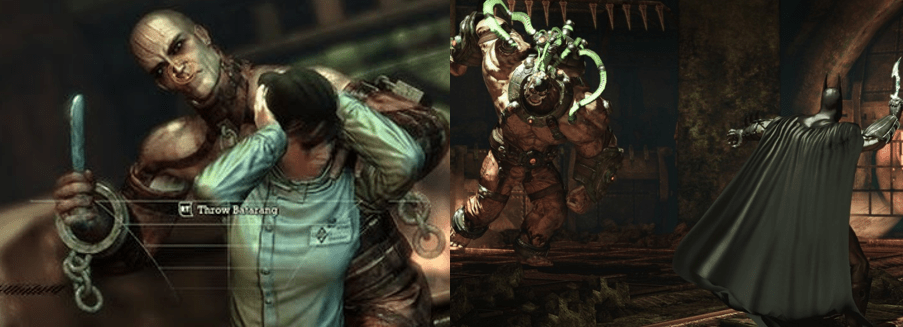

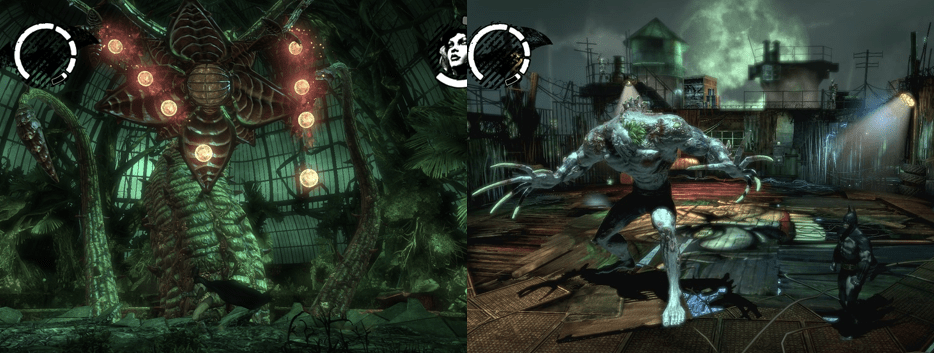





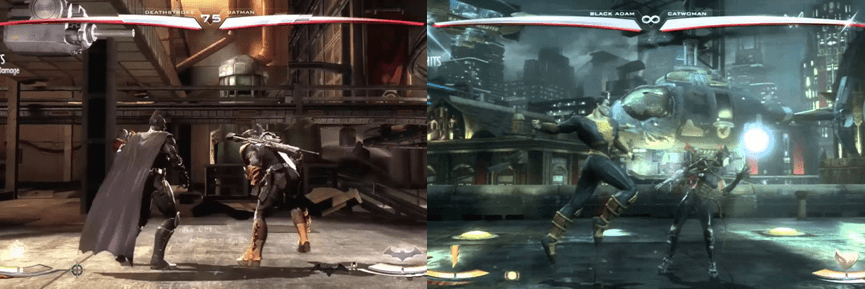
























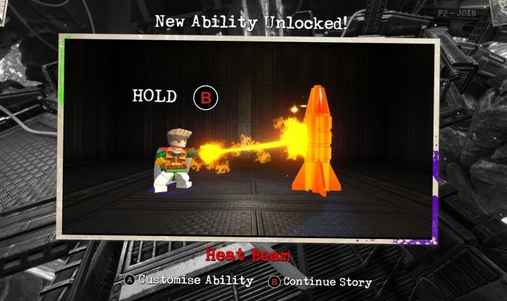
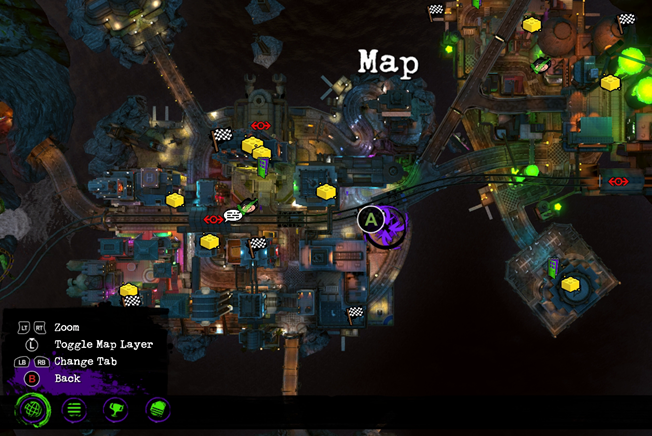
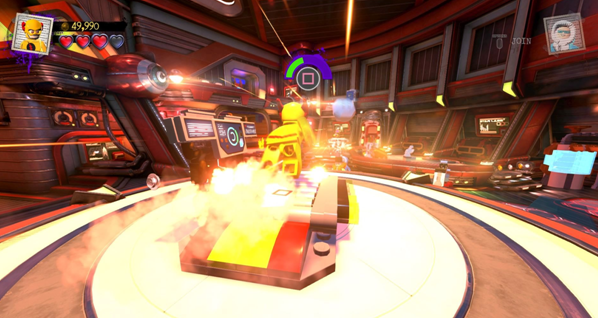


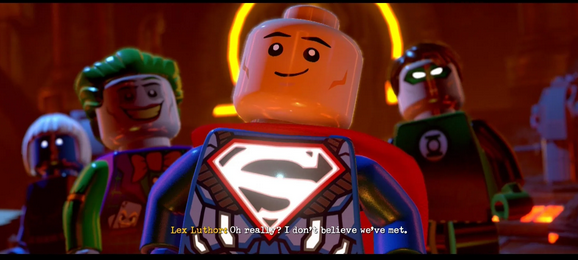
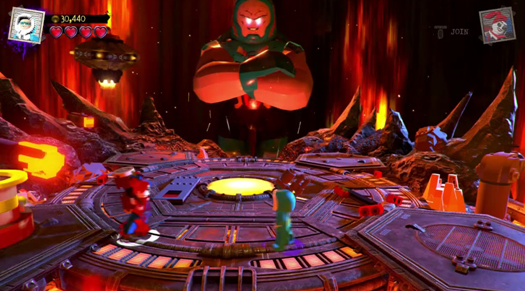


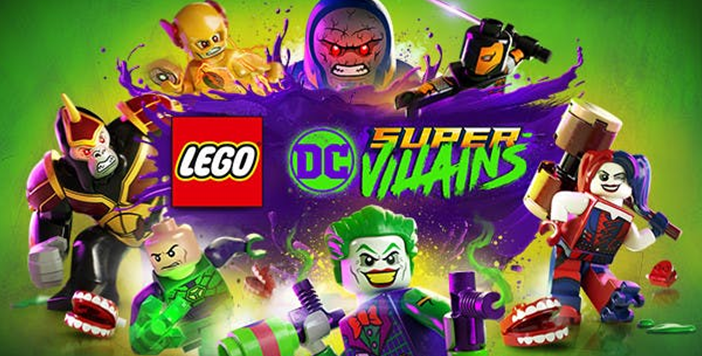





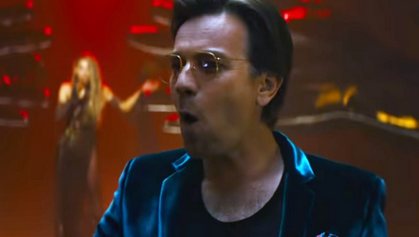
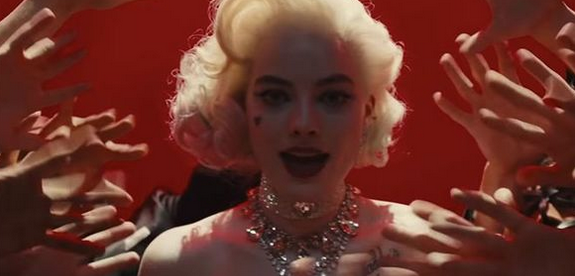







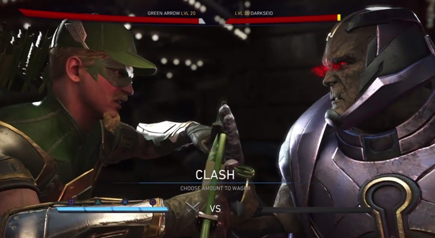
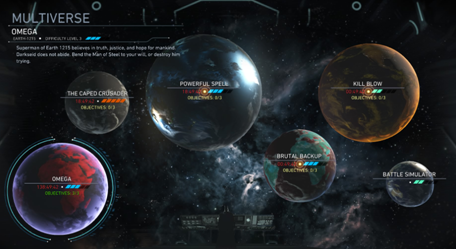

You must be logged in to post a comment.